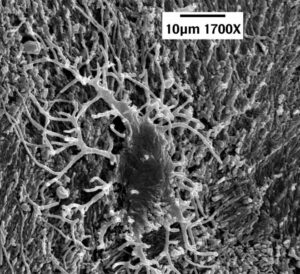
First, the article shows more incredible, delicate structures that would not be expected to survive any preservation process that would protect them for millions of years. For the first time in the scientific literature, there are two excellent pictures of dinosaur vein valves (Figures 2 and 3), features that are so delicate they are hard to extract from animals that have just recently died. In another first, he shows a nerve from the same fossil (Figure 6). In that nerve, you can see the delicate Bands of Fontana, structures that are unique to nerves.
He also shows a bone cell from the same fossil (Figure 7). While bone cells from dinosaur fossils have been published in the scientific literature, this particular one is very important. Bone cells have characteristic structures called filipodial extensions that are remarkably thin (widths of less than 200 billionths of a meter). The bone cell shown in their study has a filipodial extension that is 24 millionths of a meter long. That doesn’t sound like much, but it is about 30% longer than any other dinosaur filipodial extension found in the literature. This is important, because its length is more than 100 times its width. Think about a structure with those dimensions made out of soft tissue. It would be ridiculously fragile, yet there it is in a dinosaur fossil!
Second, and more importantly, he shows that the current explanation evolutionists have for the preservation of soft tissue in dinosaur fossils doesn’t work. Dr. Mary Schweitzer was the first to give strong evidence for the existence of soft tissue in dinosaur fossils, but she is committed to an evolutionary view. As a result, she needs to find an explanation for how such tissue could survive for millions of years. Seven years ago, she published a study in which she hoped to show that iron from the blood of a dinosaur could produce certain reactions that would preserve the tissues. I wrote about her explanation at the time and how it didn’t seem to make sense based on what we knew. Later on, better chemists than I wrote a detailed analysis about how her explanation is inconsistent with the data.
This new paper demonstrates rather conclusively that Schweitzer’s explanation doesn’t work for the fossil being discussed. Armitage and his colleague (Jim Solliday) search the filipodial extensions of bone cells that are found right outside a canal that held a blood vessel. Since the cells are so close to what was a blood vessel, and since the filipodial extensions are so delicate, those iron-induced reactions should produce noticeable effects on the filipodial extensions. He shows that those effects are not present. Thus, it is unlikely that such reactions happened at all in the fossil.
Also, in her study, Schweitzer took great pains to prevent blood clotting so that iron from the blood could be distributed throughout the soft tissue she was trying to preserve. However, Armitage and Solliday present strong evidence for massive blood clotting in their fossil. This would prevent iron from being able to promote any tissue-preserving reactions. While their evidence is strong, however, it is not conclusive. Thus, as they suggest, more research needs to be done.
The Dinosaur Soft Tissue Research Institute is on the forefront of this issue in science, and they are doing it without the massive government grants available to organizations who are desperately trying to fit the data into an evolutionary framework. If you have the means, I suggest that you make a donation to keep science progressing in this area.


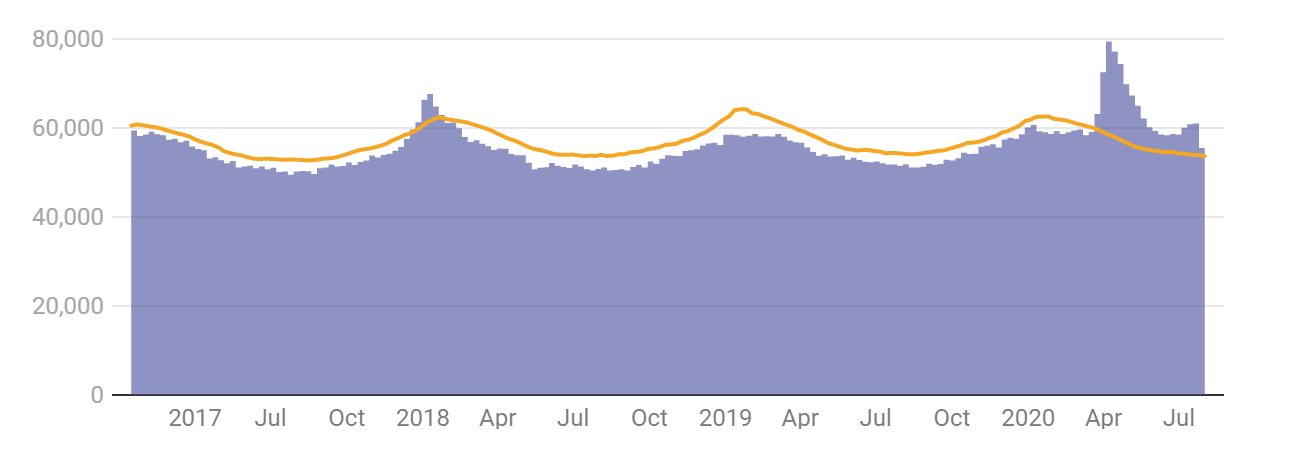
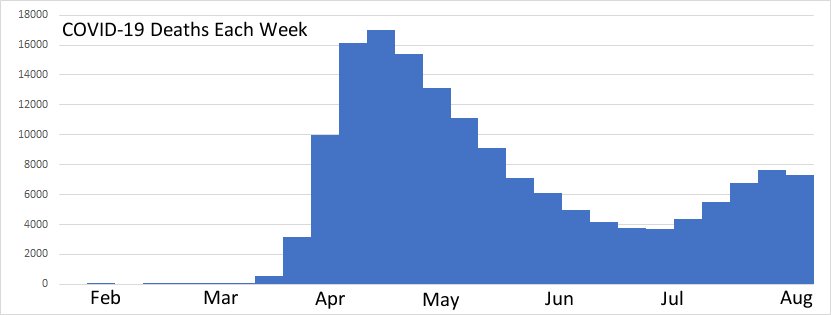
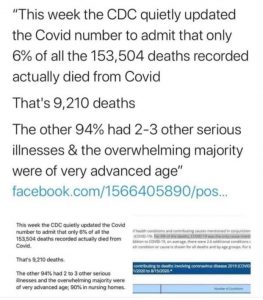

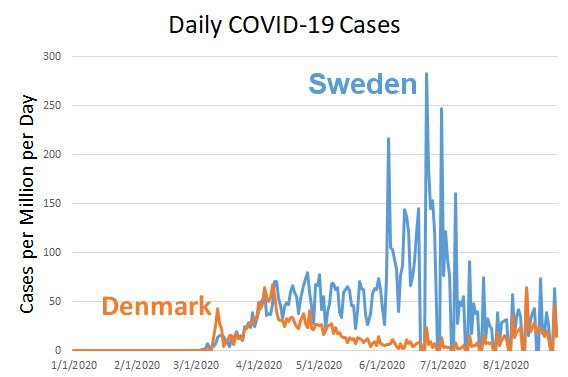
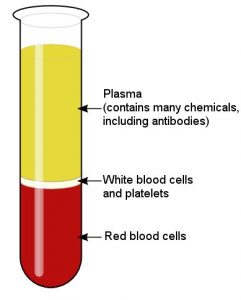

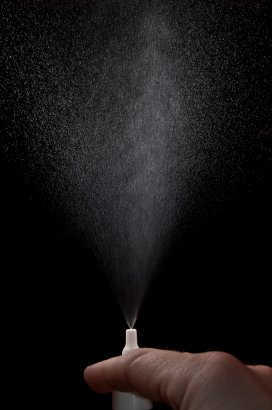
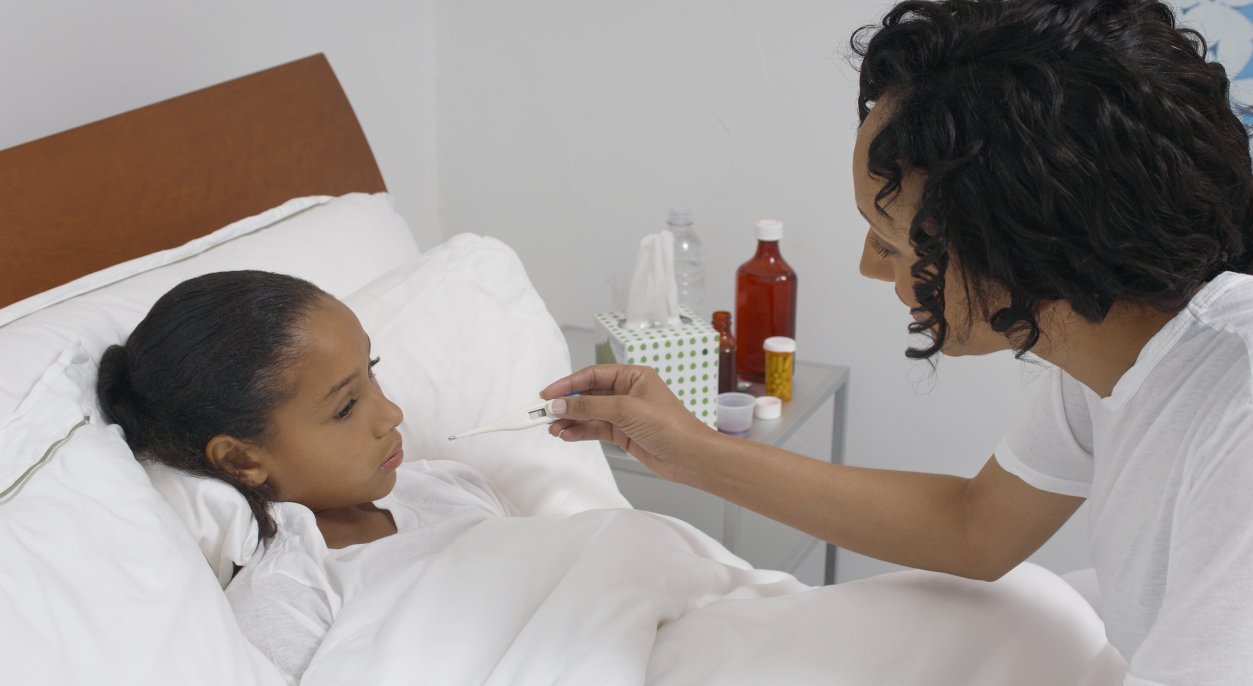
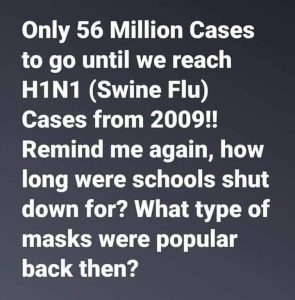 So far, I have written three articles about how horrible social media is as a source of scientific information (see
So far, I have written three articles about how horrible social media is as a source of scientific information (see